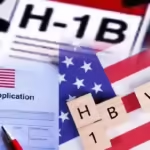
Immigration Opportunities: Canada vs. the United States
Both Canada and the United States have long been sought-after destinations for immigrants seeking new opportunities. In this blog post, we will delve into the immigration policies of both countries, highlighting the options available and providing a comparison to help prospective immigrants make informed decisions.
Canada’s Immigration Policy:
Canada’s Immigration Levels Plan sets annual targets for the admission of immigrants. The plan for 2023-2025 aims to welcome increasing numbers, reaching 460,000 in 2023, 485,000 in 2024, and 500,000 in 2025. The focus is on attracting skilled workers, promoting family reunification, and aiding vulnerable populations through refugee resettlement efforts. In 2022, 56% of new immigrants arrived through economic pathways such as Express Entry and Provincial Nominee Programs (PNP).
The United States’ Immigration Policy:
The United States operates under the Immigration and Nationality Act (INA), which allows for up to 675,000 permanent immigrant visas annually, along with additional admissions for immediate relatives of U.S. citizens and refugees. The U.S. provides various visas for temporary non-immigrant workers and limits permanent employment-based programs to 140,000 immigrants per year. The number of lawful permanent residents admitted to the U.S. has fluctuated in recent years.
Ways to Obtain Permanent Residence:
In the United States, lawful permanent residency (LPR) can be obtained through employer sponsorship, self-sponsored employment-based applications (EB-1A, EB-2 NIW), marriage to a U.S. citizen, sponsorship by a close relative, or the Diversity Lottery program. In Canada, popular paths to permanent residency include Express Entry, Provincial Nominee Programs (PNPs), and family sponsorship.
Benefits of Canadian Permanent Residency:
Canadian permanent residents enjoy the right to live, work, and study in Canada, access social benefits, and have the potential to apply for Canadian citizenship. Canada’s healthcare coverage is also available to permanent residents.
Looking Ahead:
Both countries have made adjustments to their immigration policies in recent years. The U.S. has experienced changes related to border enforcement and expanding legal pathways, while Canada is actively increasing immigration targets and empowering provinces through the PNP. The allocation of family-sponsored and employment-based visa numbers may fluctuate based on unused visa numbers from previous years.
Conclusion:
When considering immigration options, it’s essential to weigh the immigration policies, pathways, and benefits of both Canada and the United States. Understanding these factors can help prospective immigrants make informed decisions about which country aligns best with their goals and aspirations.

- Canada Introduces Clear Cancellation Rules for Visitor Visas, eTAs, Study, and Work Permits
- Breaking: 2026–2028 Immigration Levels Plan to fast-track thousands of temporary workers to PR
- Canada unveils fast-track plan for H-1B holders and major talent-attraction measures in Budget 2025
- New Report Reveals Who’s Succeeding in Canada’s Express Entry Pathway to Permanent Residence
- House of Commons Votes to Protect Citizenship Rights for Canadians Born Abroad





